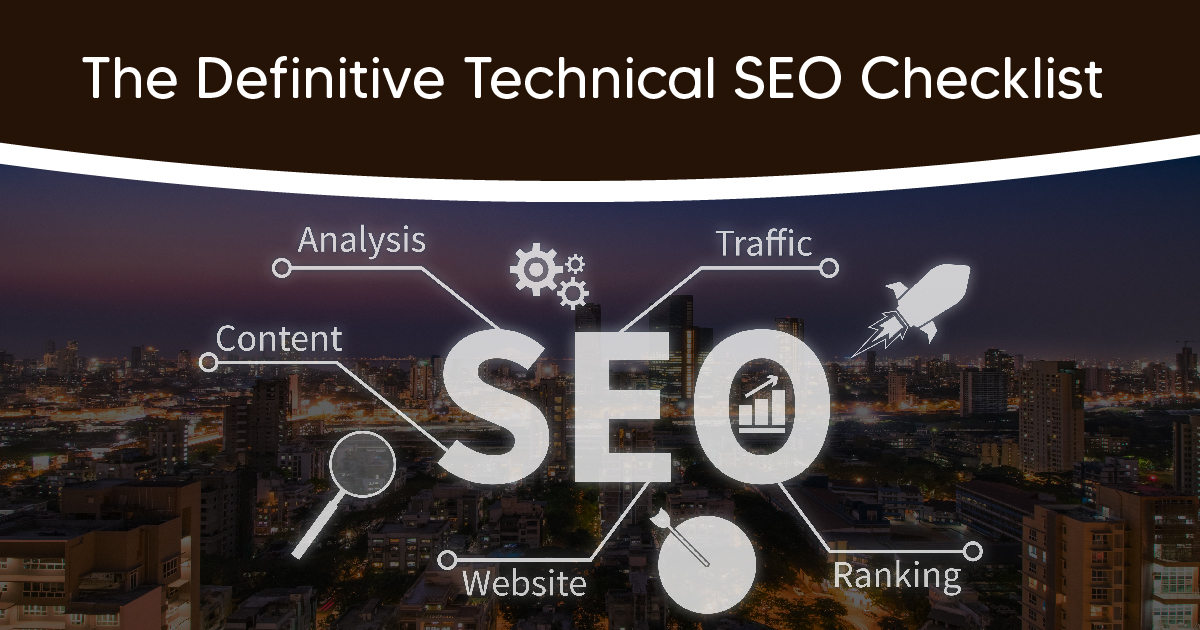In today’s digital environment, achieving high visibility in search engine results is crucial. The backend elements that affect a website’s search performance are the focus of technical SEO. It is a crucial part of search engine optimization. You require a thorough Technical SEO Checklist if you want to realize the full potential of your website or get the best digital marketing solutions in India.
In this post, the focus has been on the comprehensive checklist, covering topics like crawlability, schema markup, and mobile optimization. This checklist will act as a road map for you as you work to strengthen the technical foundation of your website and move up the search results, whether you are an experienced SEO specialist or a newcomer to the industry.
The Roadmap to Technical SEO Checklist
The foundation of your website’s search engine optimization operations is technical SEO. In order to improve your website’s visibility and rating on search engine results pages (SERPs), you must optimize its infrastructure and backend components. The performance of your website can suffer if technical SEO is neglected, and it will be more difficult for search engines to successfully crawl, index, and rank your material. Hence, you can connect with Megamax Services to get the NxtGen Data Centre Services or SEO services. Here is the definitive Technical SEO Checklist to assist you in covering all the critical technical components of SEO.
- Optimization for mobile
Making sure your website is mobile-friendly is essential as mobile traffic keeps expanding. Make sure your website’s design is responsive so that it can easily adjust to various screen sizes and devices. For a seamless user experience, speed up the loading of your mobile site. Moreover, check for mobile-specific concerns like touch items that are too close together because this can result in unintentional clicks.
- Crawlability
Search engines must successfully crawl and index your website to rank your content. Make an XML sitemap and submit it to search engines. Make sure your robots.txt file is optimized for proper crawling. Use a URL structure that is clear and informative. Also, keep an eye out for them and fix them. Implement rel=” next” and rel=”prev” for content that is paginated.
- Website Speed
Page speed has an impact on user experience and is a key ranking element. Utilise tools like Google PageSpeed Insights to analyze and speed up page loads. Compress photos and other resources to speed up loading times. Use server and browser caching to render pages more quickly.
- Schema Markup
Rich snippets in search results can result from schema markup, which improves how search engines perceive your material. For items like products, reviews, events, etc., you must add structured data markup. Verify the schema markup you’ve used.
- HTTPS SSL Certificate
A safe website is crucial for user trust as well as search engine optimization. Ensure that your website encrypts data using HTTPS. Redirect HTTP to HTTPS using the 301 method to prevent duplicate content problems. Verify that all resources have been loaded safely. Choose the right NxtGen Data Centre Services like Megamax Services to receive the right SEO technique.
- Mobile Pages Experience
As user experience-focused ranking variables, Google has introduced Core Web Vitals. Enhance metrics include the largest contentful paint, the first input delay, and cumulative layout shift. These are known as core web vitals. Track the Core Web Vitals performance of your website.
- Website Design
SEO and user experience are both enhanced by a well-structured website. Put stuff into logical categories and subcategories using the logical hierarchy method. Use breadcrumb trails to make navigation simple. Use internal links to join relevant information together.
- Canonical Tags
Canonical tags aid in avoiding problems with duplicating content, which can be the best Real ROI Success of Digital Strategies. Use the rel=”canonical” element to identify the preferred version of a page. Ensure that canonical tags are used properly.
- 404 Error Pages
Create a unique 404 error page to keep users on your website and interested. Make a user-friendly, branded 404 error page with a custom design. Provide a search bar or links to crucial pages.
- International SEO (Hreflang Tags)
Hreflang tags are essential if your website caters to different languages or geographical areas. Implement hreflang tags correctly to offer the appropriate material to the appropriate audience.
- Duplicate Content
Your rankings can be harmed by duplicate material. Identify it and deal with it. Use canonical tags to identify duplicate pages. Redirect duplicate URLs to the preferable version using a 301 redirect. Consult the Duplicate Content report in GSC to identify problems.
- URL structures
Make clear, structured URLs that are simple to understand for both users and search engines. You must include relevant keywords in URLs to make them keyword-friendly. In URLs, use hyphens to separate words.
- Image Enhancement
Images are crucial for retaining users, but they should be performance-optimised. Give each image a descriptive alt tag. Reduce file sizes by compressing images. Implement lazy loading for photos that are below the fold.
- Titles for pages and meta descriptions
Create page names and Meta descriptions that are interesting and informative, which can be the Real ROI Success of Digital Strategies. Ensure that the page’s names and meta descriptions are appropriate. Keep titles and descriptions inside the allotted character count.
- H1, H2, H3 etc. (header tags)
To organize your material and make it easier to read, you can use header tags. Follow a logical hierarchy from H1 to H6, from left to right. Headers should contain pertinent keywords.
- Content Originality and Quality
Original, high-quality content is essential for SEO. Steer clear of duplicate or copied content. Add more substance to the existing thin content.
- XML Sitemap
Ensure that your XML sitemap is current and contains all crucial pages. Automatically update your XML sitemap. Send Google Search Console your sitemap.
- User Experience (UX)
By decreasing bounce rates and boosting user engagement, a good UX can indirectly benefit your SEO. Make sure your website is responsive on all devices, especially mobile ones. Give users clear CTAs to follow. Make sure the page layout is user-friendly.
- Google Analytics and Search Console
These tools let you keep an eye on your website’s performance and address problems. Setting up Google Analytics will allow you to monitor user behavior. Use Google Search Console to find and fix website faults.
Conclusion
These technical SEO best practices can help your website function better overall and enhance its search engine rankings. Implementing and maintaining them on a regular basis can help. Keep in mind that SEO is a dynamic industry and that maintaining your website’s exposure and relevancy in search results requires remaining current with the most recent trends and algorithm updates. If you are searching for the best digital marketing solutions in India, Megamax Services can help you with it.




